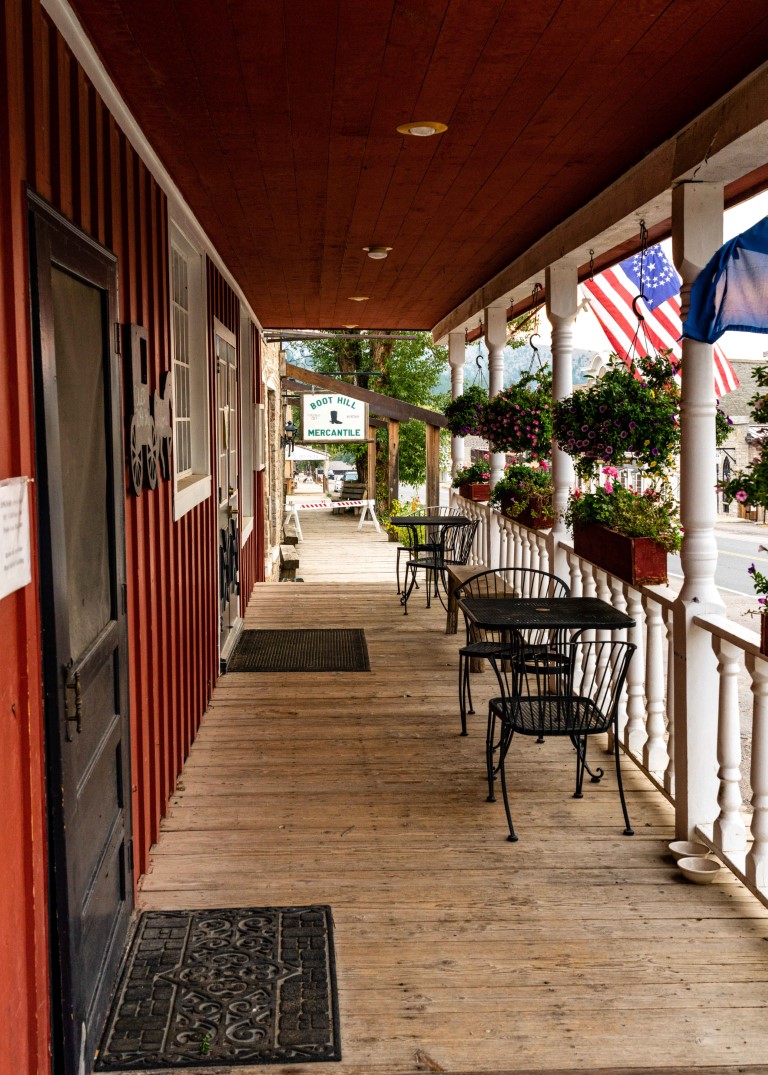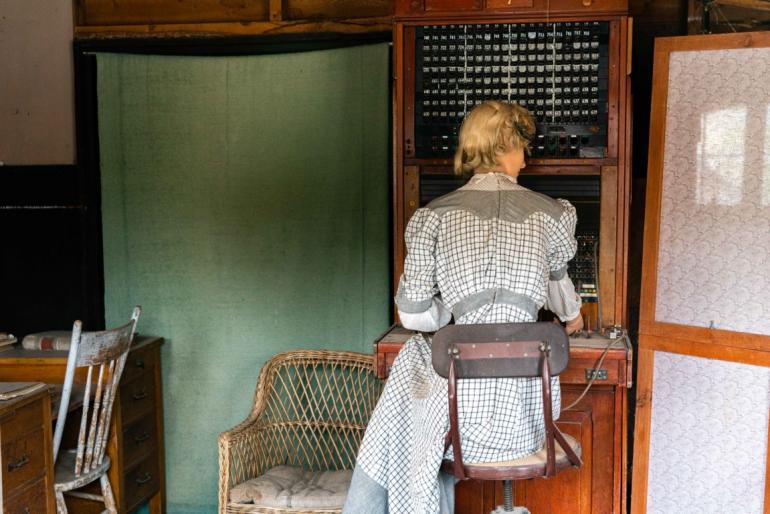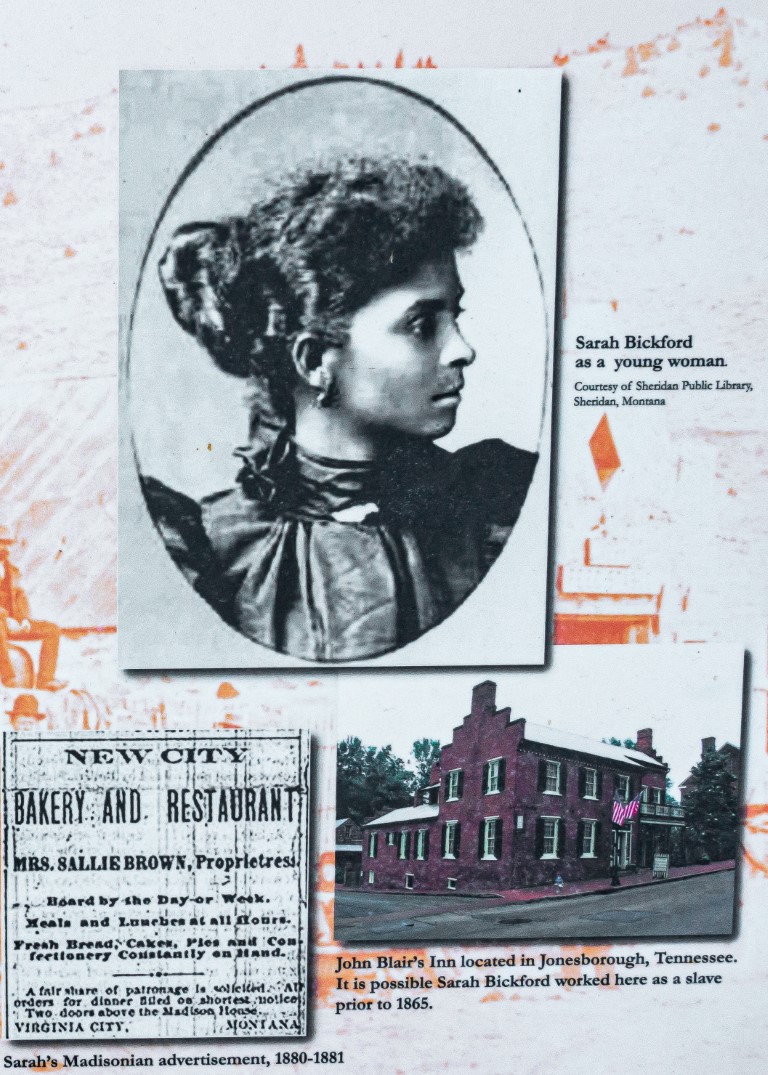Virginia City - "Where Montana History Lives"

There are ghost towns and then there are ghost towns. Some old mining towns simply yield to Nature and dissolve back into the ground and live on as only a memory – a true ghost of the past, such as Bean, Pioneer and Taft. Others find more attention and have been actively preserved and now stand as a vacant testament to Glory Days gone by – towns such as Bannack and Garnet. And then there is Virginia City (and its sister, Nevada City, just down the road) – living in two worlds – the “then” and the “now”. These are real, still active towns, but with a preserved, historic “ghost town” core. Indeed, Virginia City is still the seat of Madison County.
 If you are like me, interested in history and the past, Virginia City is quite fascinating and I always enjoy the chance to stop for awhile on my travels through the area. Now a National Historic Landmark, the town is open for exploration as an “open air museum”. Down Main Street, there is a mixture of old, preserved buildings in their original condition with “Old West” period displays inside. Information plaques about a particular building’s past stand next to active restaurants, gift shops, and other businesses and helps add context to the vibe of the town as a whole.
If you are like me, interested in history and the past, Virginia City is quite fascinating and I always enjoy the chance to stop for awhile on my travels through the area. Now a National Historic Landmark, the town is open for exploration as an “open air museum”. Down Main Street, there is a mixture of old, preserved buildings in their original condition with “Old West” period displays inside. Information plaques about a particular building’s past stand next to active restaurants, gift shops, and other businesses and helps add context to the vibe of the town as a whole.
Virginia City arose as the settlement that supported the Alder Gulch gold rush of 1863. It started off life as “Verina”, the name of the first and only First Lady of the Confederate States. However, upon registration, a Connecticut judge changed the name to Virginia City. It served as the Territorial capitol for 10 years until 1875, wresting it from Bannack in 1865.
Virginia City quickly became a boomtown of thousands of prospectors and fortune seekers. The remoteness of the region was without law enforcement or a justice system. This gave rise to serious criminal activity, especially robbery and murder along the trails and roads of the region. “Road agents”, as they were known, were ultimately responsible for up to 100 deaths in the region in 1863 and 1864. This resulted in the formation of the “Vigilance Committee of Alder Gulch” and the infamous Montana Vigilantes. Up to 15 road agents were hanged by the vigilantes in December 1863 and January 1864, including the sheriff of Bannack and the alleged leader of the road agent gang, Henry Plummer. Perhaps these incidents had something to do with the moving of the capitol from Bannack to Virginia City.

With the gold all played out, the town was in serious decline by the 1940s, including Main Street. That’s when Charles and Sue Bovey began buying the town and putting much needed maintenance into failing structures to save this unique window into Montana’s past. By the 50’s it was turning around again and becoming a ghost town tourist destination. It has since been designated a National Historic Landmark and most of “downtown” is now owned by the Montana state government. Currently, the Montana Heritage Commission oversees the Historic District of Virginia City and Nevada City. The Commission operates gold panning, the Nevada City Music Hall and Museum, and the Alder Gulch Railroad, a narrow gauge passenger line that runs between the two “cities”.
Times were lively in old Virginia City. Apart from the hangings, it boasted the first newspaper and public school in Montana Territory. Several “interesting” figures have graced its streets, including a young Calamity Jane, who would later return to Montana after the death of Wild Bill Hickok.
 There was also the iconic Montana businesswoman, Sarah Bickford. She was born a slave in Jonesborough, Tennessee in 1852. At the age of 20, she moved to Virginia City. By the time she died in 1931, 2 husbands and 7 children later, she owned the water company, the New York City bakery and restaurant in town, several city lots, mining claims, and a small farm. Her inspiring life has left an indelible mark on Montana History. More information on this remarkable woman can be found at: www.sarahbickford.org/
There was also the iconic Montana businesswoman, Sarah Bickford. She was born a slave in Jonesborough, Tennessee in 1852. At the age of 20, she moved to Virginia City. By the time she died in 1931, 2 husbands and 7 children later, she owned the water company, the New York City bakery and restaurant in town, several city lots, mining claims, and a small farm. Her inspiring life has left an indelible mark on Montana History. More information on this remarkable woman can be found at: www.sarahbickford.org/
Stroll down the boardwalks of Main Street at your own pace – there is much to see and imagine here. When open, you can step inside many of the restored buildings and see how life was. Stores like the barber shop, pharmacy, general store, livery stable, millinery shop, cobbler, etc., often with manikins dressed in period clothes and the shops stocked with authentic period merchandise. Along the river are huge piles of riverbed, evidence of the massive dredging that took place there. One of these dredges, now a rusting ghost itself, can be seen in neighboring Nevada City. Yes, in Virginia City, its easy to step back in time and see how “Montana History Lives”. Slow down and take some time to wander through, pardner – you’ll be glad you did!
More information can be found on the city’s website.




Leave a Comment Here